History, By Architecture, Blog#01
The tower of Babel, The first High-Rise??
Myth or truth!
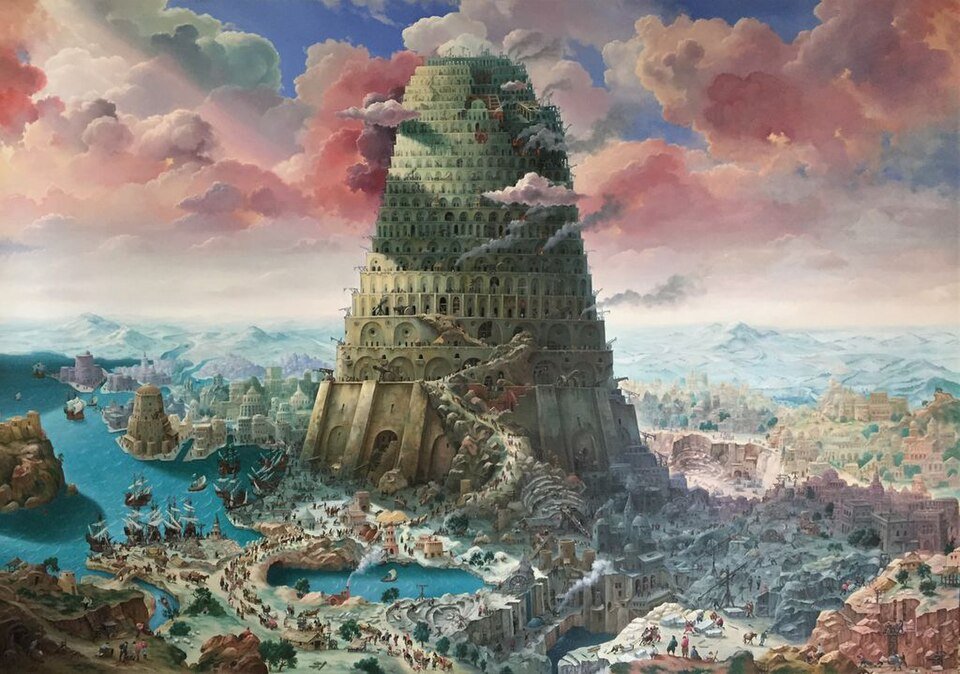
By Александр Михальчук – https://www.artmajeur.com/en/mikhalchyk2110/artworks/12543434/the-tower-of-babel-big, CC BY-SA 4.0, https://commons.wikimedia.org/w/index.php?curid=94444289
In the year 2000-2200 BEC after the great flood, in Mesopotemian civilization, it is said that people attempted to build a tower to reach the Heavens which would be the first High-rise But, Yemen, The God confused their language and scattered them, showing that pride and arrogance can lead to distraction and confusion while Humility and unity can bring success.
Is this a myth? Let’s dive deep into it and first understand the biblical story behind it.
The Biblical aspect
In the Bible it says this tale is why we have different languages. In the year 2000 BCE, in Babylon, Mesopotamia, people wanted to build a super tall tower to reach haven. They want everyone to remember them and live together but this made god unhappy because he wanted people to spread out. Even though god said no, they still built it, which made him more upset. So god scattered them all over and gave them different languages so that they couldn’t understand each other. After Noah escaped the flood, his descendents multiplied over the face of the earth. They migrated Eastward and found a plain in Shirar (Modern day Iraq). According to Genesis 11:
“And as people migrated from the east, they found a plain in the land of Shinar and settled there.“
-Genesis 11:2
According to Genesis 11, they attempted to build a tower to reach the height of heaven itself.
“They said, ‘Come, let us build ourselves a city and a tower with its top on the heavens , and let us make a name for ourselves lest we be dispersed over the face of the whole earth.’ “ -Genesis 11:4
Also, “And the lord said, ‘Behold they are one people, and they have all one language, and this is only the beginning of what they will do. And nothing that they propose to do will now be impossible for them “
-Genesis 11:6
So the god decided to break their spirit and stop them from building the tower, the city and to spread throughout the world.
“Come, let us go down and confuse their language, so that they may not understand one another’s speech.“
-Genesis 11:7
According to the Hebrew language Babel means- to mingle, mix, confuse, confound.
“Therefore its name was called Babel, because there the LORD confused the language of all the earth. And from there the Lord dispersed them over the face of all the earth“
-Genesis 11:9
So, for now the gist is that we know that there was a tall tower called “The babel” and god destroyed it for the sack of mankind!
Now let’s understand why the tower was there in the 1st place.
Why Babylon in ancient Mesopotamia?
Geological: Sir Banister Fletcher in the book of “A history of Architecture”, he talked about the West Asiatic Architecture
“Geographically the earliest civilization of Western Asia flourished in the fertile plains of the twin river, Tigris and Euphrates. This district is given to Mesopotamia (mesos=middle+potamos=river)”.
“To the North-West, the river plains join with Syria and Palestimne, facing the Mediterranean, together afford a link with Egypt; the whole construing the ‘Fertile Crescent’, containing the majority of the whole land in the near East.”
(Affiliate link)
Because of this location, ancient Mesopotamian people constructed a network of canals, storage basins and ditches which beside conserving the rivers served as waterways too, and made roads largely unnecessary. With this technique, a civilization was built near the rivers and the whole area became a connection of small towns.
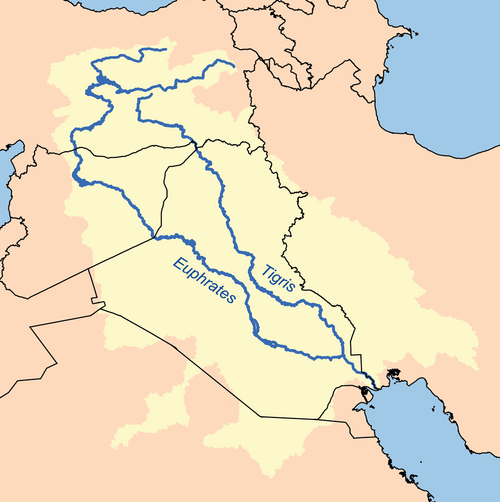
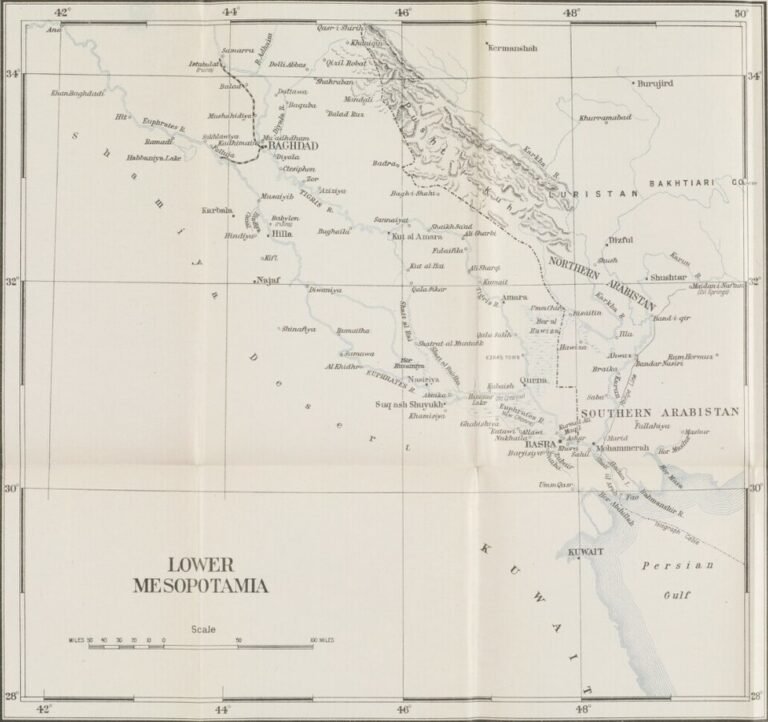
1. machine-readable author provided. Kmusser assumed (based on copyright claims). – No machine-readable source provided. Own work assumed (based on copyright claims)., CC BY-SA 2.5, https://commons.wikimedia.org/w/index.php?curid=323268
2. By East India Company, the Board of Control, the India Office, or other British Government Department – https://www.qdl.qa/en/archive/81055/vdc_100045738552.0x000026, OGL 2, https://commons.wikimedia.org/w/index.php?curid=131243669
Material: Building Material universally available was the clay from the soil itself, well suited for the making of bricks, which were either sun -dried or when intended for the facing of important structures, kiln -burnt and for decorative purposes glazed in different colors.
Climate: The land of Mesopotamioa suffered very extreme climates over the years. In the summer, the scorching sun , particularly in the Southern part, Cold with snow falling in the Winter from the northern mountains. Sufficient rainfall, except in the Northern districts and crops wither without ample moisture. Without the complex and efficient irrigation system, that drains the mashes, distributes the river waters and lends such high fertility to the alluvial soil, the ancient civilization would never have the high pitch that it did.
Social: In ancient Mesopotamia it was the needs of agriculture that shaped the form of the social structure and conditioned the nature of labour, commerce, arts, science and religion. The complexities of irrigation enforced communal efforts.This communications made strong connections among the people and that led to needed commodities, hence trading became a major activity. Great skills were developed in metal working, weaving, pottery etc. The potter’s wheel was known as early as 3000 BC. People merging together and having a codependent lifestyle turned to massive communication thus the 1st written language is The Cuneiform Script or wedge shaped characters on clay tablets.
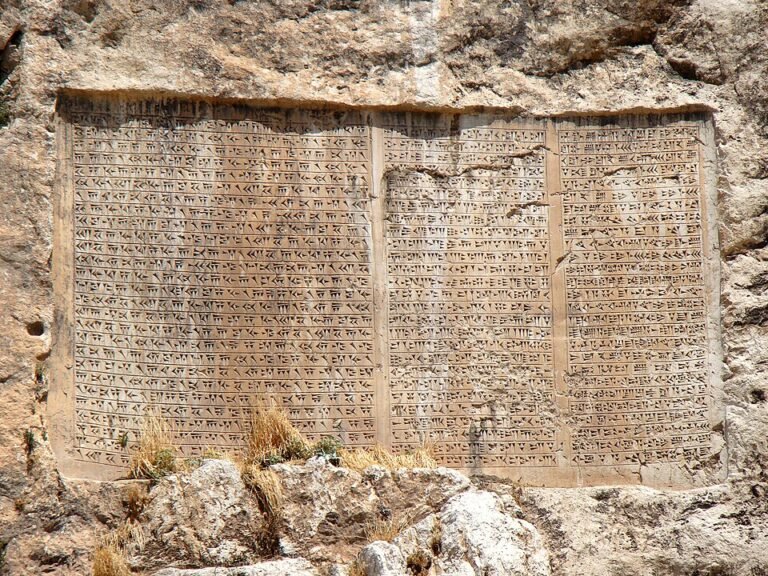
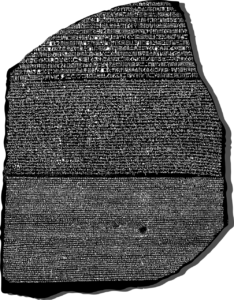
By Bjørn Christian Tørrissen – Own work by uploader, http://bjornfree.com/galleries.html, CC BY-SA 3.0, https://commons.wikimedia.org/w/index.php?curid=8296178
Religion: The polytheism of the ancient people of the plains was of much the same character throughout the entire region at any given point of time. Religion reflects the way of life in which agriculture was the mainstay, precariously and painstakingly maintained under the ever present threat of disastrous flood, drought or marsh fire. Thus the gods were conceived as awful beings of uncertain temper whom mortals existed ro serve.
The part played by the distant mountains in determining the fortune of the plains was clearly seen, so the gods were thought to reside in the heights and to approach them.
Thus temples were built on great, elevated artificial platforms, often provided with ‘ZIGGURATS’ or holy mountains.
So there were towers in Mesopotamia named Ziggurat- stepped tower, and with practical height, then how was The Tower of Babel built so high?
The tower of Babel or Ziggurat!
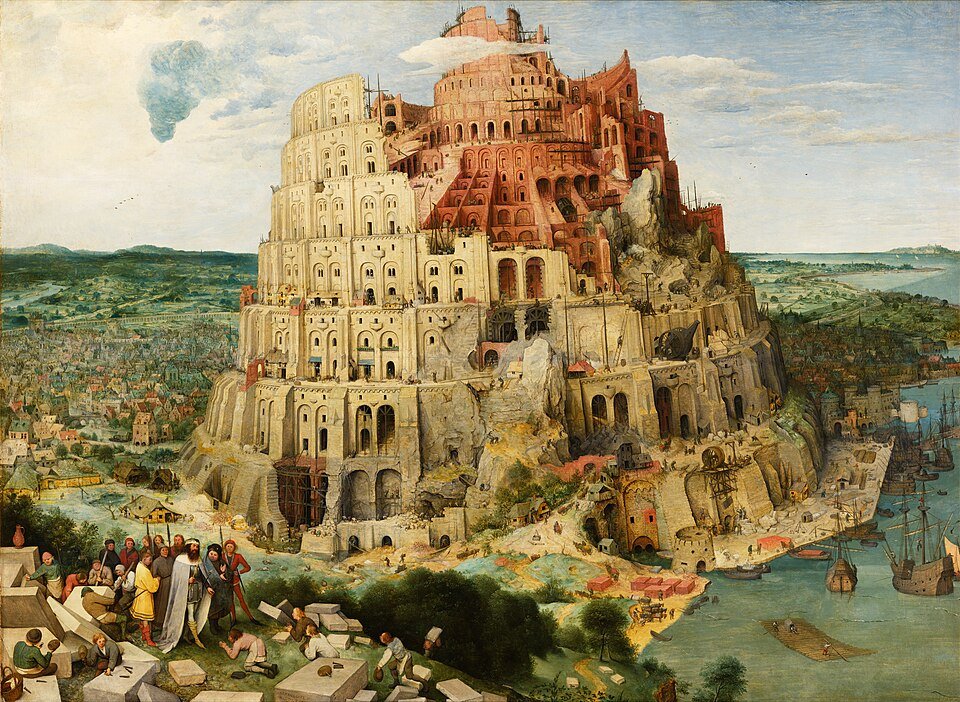
By Pieter Brueghel the Elder – Web Gallery of Art: Image Info about artwork, Public Domain, https://commons.wikimedia.org/w/index.php?curid=15416185
Whenever we think of The Tower of Babel, these pictures come to our mind! This is the most iconic depiction of this structure. Dutch artist Pieter Bruegel the elder painted in 1563 a massive spiraling structure that reaches into the clouds. But why did he draw it in a spiral shape? Was the tower actually like this?
Thousands of years ago, in the flood plains of modern day Iraq. The first complex civilization emerged. Around this time the people of ancient Mesopotamia began building grand temples known as Ziggurat. Stepped pyramids made entirely of clay bricks. One of the most famous is the great Ziggurat of UR. Rising up like a man made mountain over the flat floodplains. These structures are believed to reach into the heavens themselves. Their peaks were a gateway for the gods where they could enter and exit the human worlds as they pleased but among these ancient towers one rose among the rest and that was in a city known as Babylon. Of all the cities in ancient Mesopotamia, Babylon was by far the greatest with a population reaching up to 200,000 people. At the very centre stood a grand religious complex. Home to a towering Ziggurat known as the, Etemenanki!
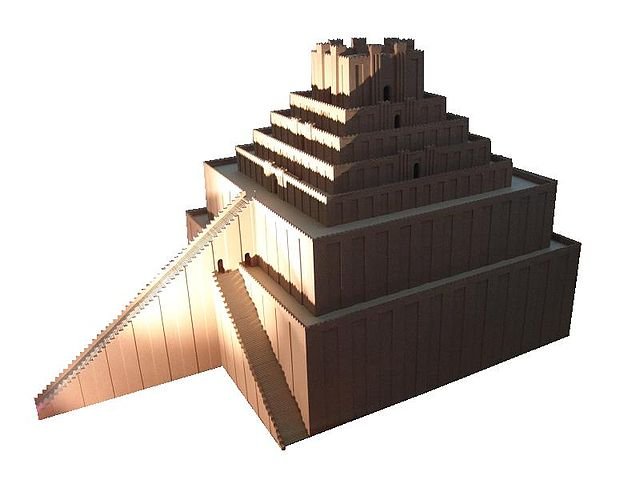
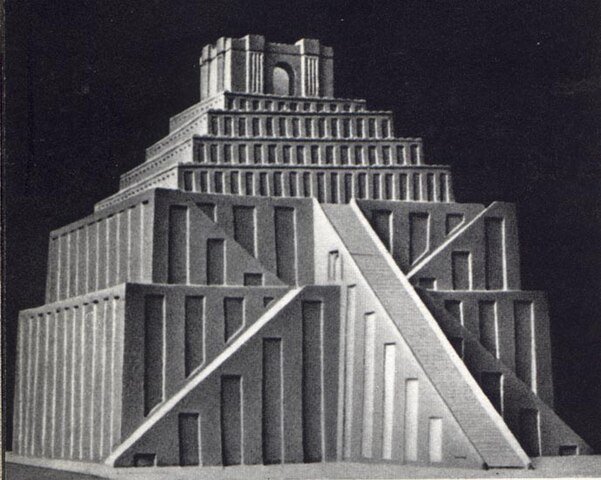
1.By O.Mustafin – Own work, CC0, https://commons.wikimedia.org/w/index.php?curid=17198677
2.By Michael V Fox – http://imp.lss.wisc.edu/~mfox/Religions%20of%20the%20ANE/Mesopotamia/Mesoptamia%20%20Temple%20and%20Ritual.html, Public Domain, https://commons.wikimedia.org/w/index.php?curid=10703451
Although the structure no longer stands, excavations of the Etemenanki suggested that it once stood at around 91M tall. That is roughly the height of the Statue of Liberty and so it would have been one of the tallest buildings in the ancient world.
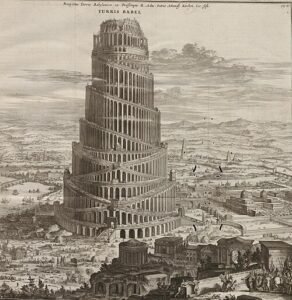
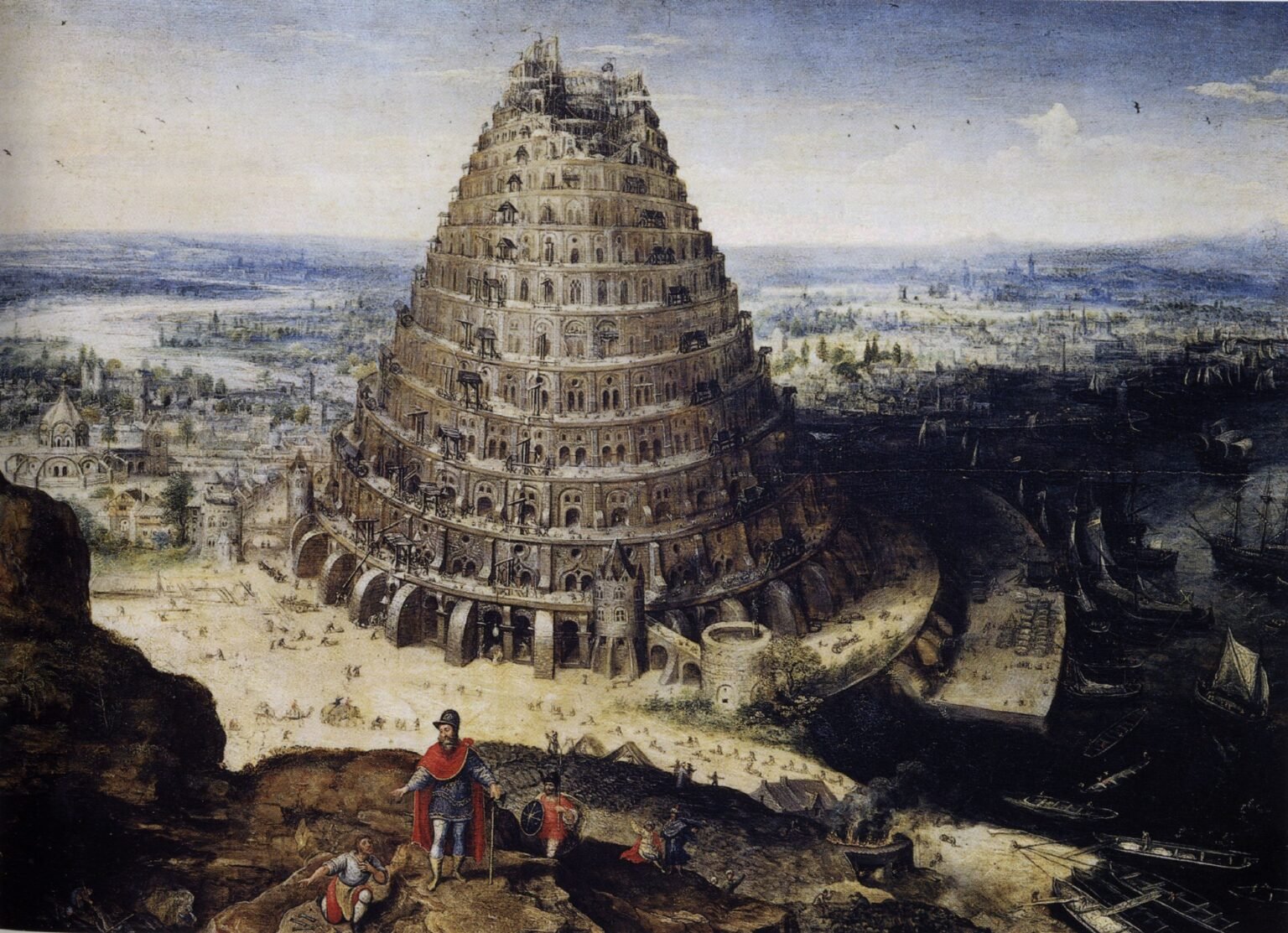
By Coenraet Decker – http://digi.ub.uni-heidelberg.de/diglit/kircher1679/0059, Public Domain, https://commons.wikimedia.org/w/index.php?curid=35102210
By Lucas van Valckenborch – Grandes énigmes de l’humanité – éditions Larousse, Public Domain, https://commons.wikimedia.org/w/index.php?curid=4126824
Much of what we know about the Etemenanki comes from a Blackstone tablet which is from the 6th century BC. King Nebuchaduezzan, 587 BC. Curved into it is an image of a king standing beside Nebuchadnezzar the 2nd a seven stepped Pyramid complete with a floor plan below some text written in Canare form describing a massive construction project of bricks and tar. The tower is square and step by step. The tower stands on another but shorter in size. The Etemenanki, is the biggest Ziggurat till date and it was a home to the Chief god of the Babylonian cosmos. This tower may have inspire the original Tower of Babel especially as The Babel is also the Hebrew word for Babylon when archaeologists began uncovering the ruins of Etemenanki, they quickly drew connections to the biblical Tower of Babel for instance the bible specifically notes that the tower was made of brick and tar, a unique detail points directly to Mesopotamianbuildings were clay was the most abundant material and then there’s the religious aspects of the tower.
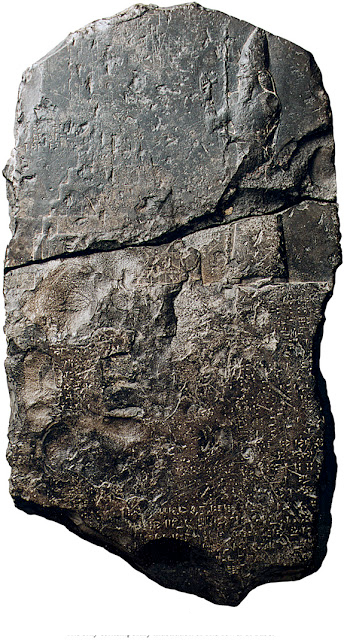
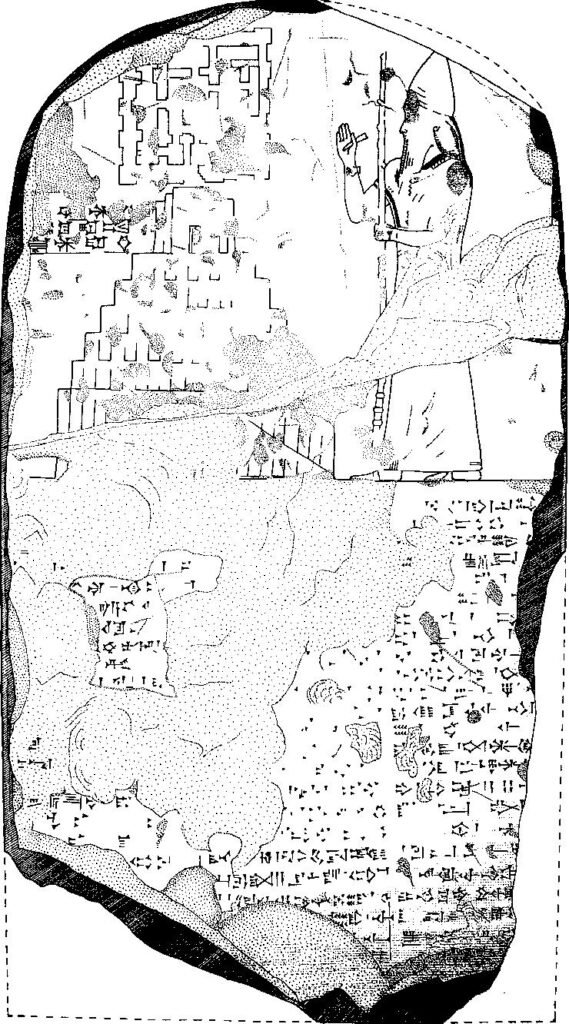
By Robert Koldewey (10 September 1855 – 4 February 1925) – Die Tempel von Babylon und Borsippa : nach den Ausgrabungen durch die Deutsche Orient-Gesellschaft, 1911, Public Domain, https://commons.wikimedia.org/w/index.php?curid=62546020
By Robert Koldewey (10 September 1855 – 4 February 1925) – Die Tempel von Babylon und Borsippa : nach den Ausgrabungen durch die Deutsche Orient-Gesellschaft, 1911, Public Domain, https://commons.wikimedia.org/w/index.php?curid=62546010
In the book of Gwendolyn Leick- Babylonians: an Introduction. Page 63, 108
Ziggurat-
# “They were meant to function as a gateway for the gods to come down to the earth from the heavens.”
In the book of Walton John H, Ancient Near Eastern thought and the old Testament. Page 72-82
# “They were not about getting man into the heavens, but getting the gods to come down to the earth.”
And in page 79-127- “ Humans and gods were codependent on each other.”
The writer refers to this as the “great Symbiosis.”
In the Language of Akkadian there is a phrase that is Babylion=Bab+ilu: means “gate of the gods”. As mentioned these Ziggurat were meant to reach heavens and allowed for the gods to pass into the human realm. But in The Tower of Babel story it’s been reversed. Now it’s the humans entering the realm of gods. They’re attempting to disrupt the natural order and that’s why God confused their speech. Since these discoveries, many scholars have argued that the Tower of Babel was likely inspired by Etemenanki. But how does a BabylonianTemple feature so prominently in the Bible?
By the 6th century BC the neo Babylonian Empire was at its peak. Like manu empires it expanded by conquering neighboring lands. One of which is the homeland of the Jewish people. In 587 BC a Babylonian Army invaded Jerusalem and took the city’s inhabitants back to Babylon far from home and surrounded by strange people and even stranger Gods. The Jews spent decades in this unfamiliar place. All in the shadow of the towering cities. During this time the Jew people were writing down history, many of these stories would develop into the Hebrew Bible and it’s no coincidence that the stories began to emerge about a great tower, one that represented the pride of the Babylonians. The biblical writers appear to have come into contact with myths that surrounded them. One of which was the story of Ena and the lord of Arata. This story features the construction of a great temple and a prayer for all mankind to praise the god Enlil. It looks like the biblical version flips the story in its head. God divides humankind into many languages to prevent anyone from challenging him; the exile of Babylon was a melting pot of ideas. The result is the story of the Tower of Babel, a legendary structure that blinds the lines between History and myths. Ofcourse, this story has long outlived the Etemenanki. The Babylonians were eventually conquered by the Persians who toppled the city of Babylon and returned the Jews to their homeland. The great Ziggurat itself was never rebuilt and so it’s been preserved mostly through ancient writings that would later form part of the Bible.
